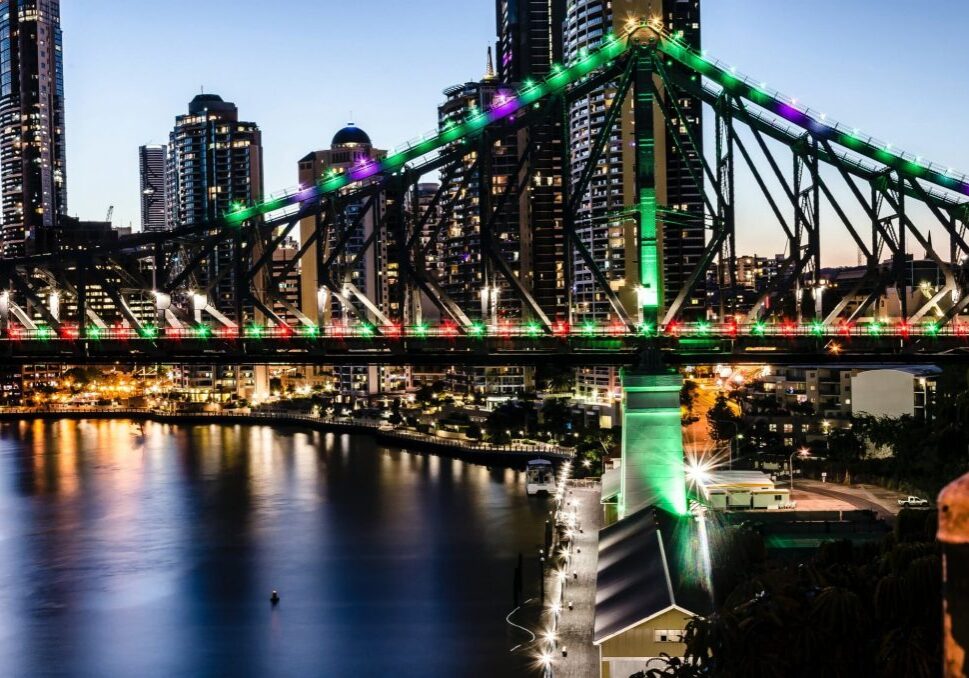How to remove mould from walls

With all this wet weather we are having lately in Brisbane there is a high chance you have spotted some mould growing on your walls. Mould loves moist environments, and the level of rainfall has often been so high lately that some inevitable leaks between walls or into rooves. This has created the perfect environment for mould.
Removing mould is not the most enjoyable thing to be doing, but it is important for your health and wellbeing. To help out, here is how you can crack down on mould and remove it from the walls.
How to remove mould from walls
If there are small spots of mould you can use some home DIY solutions to treat the area. There are many different DIY methods depending on the type of wall you wish to treat. So, you will need to have multiple mould removal weapons up your arsenal to deal with the problem.
It is important to note that these methods only serve as a temporary solution. If the root cause of the mould is not fixed then mould will likely continue to return. As well as this, you should not treat any patches of mould larger than the palm of your hand. This could spread the spores further around your home and put you at risk of inhaling toxic spores.
Mould removal method for general walls
There are two general methods of DIY mould removal for walls, bleach, and vinegar. Here is how you use each for mould removal.
Bleach:
- Ensure you wear a mask, safety goggles, and some gloves. Open up the windows to allow for fresh air.
- Mix a ratio of 1:10 bleach to warm water in a bucket.
- Dip a microfibre cloth into the solution and squeeze out any excess liquid. Alternatively, use a small toothbrush for small, difficult to reach areas.
- Wipe the affected area in a circular motion.
- Once finished cleaning, press a dry microfibre cloth against the clean areas to dry. Don’t rub them.
While Bleach is a common DIY treatment for spot removal, care should be taken. Bleach can damage paint or wallpaper, so, you should test it on a small patch before use.
Vinegar:
An alternative to bleach that is not chemical based is vinegar. Vinegar is less harsh than bleach, however it is vital that you wear a mask, safety goggles, and gloves. Appropriate protection can be found easily at your local Bunnings, or other hardware stores.
- Fill a spray bottle with vinegar. No water.
- Spray the vinegar on the mould affected area and let it sit for an hour.
- Dip a microfibre cloth into some water and squeeze out any excess water. Alternatively, use a scrubbing brush for any stubborn mould
- Wipe away the mould from affected areas
- Finally, press the areas dry with a dry microfibre cloth. Spray the area with more vinegar and leave it to dry naturally.
It is important to note that these two methods should never be mixed. Mixing vinegar and bleach will create a toxic vapour.
Removing mould from bathroom walls
Mould is often found on bathroom walls due to the high levels of moisture found in bathrooms. This is why tiling is used, it is easy to clean and discourages mould. The easiest way to clean mould off your bathroom walls is with a store-bought chlorine bleach cleaner. It is important that you always read the instructions before using the products on your walls. As well as this, you must always wear protective gear like a mask, safety goggles and gloves.
To clean with a chlorine bleach cleaner, use the following method:
- Spray the cleaner on the mouldy surface and let it sit for around 30 minutes
- Scrub with brush
- Finally, rinse the cleaner off with warm water.
Removing mould from plaster walls
Plaster has the ability to absorb excessive amounts of water when it is in humid or damp conditions. Because of this it requires a special cleaning method to ensure that mould doesn’t instead just grow. To clean plaster walls, you should follow this method:
- Mix water and a non-ammonia based soap to make suds.
- Dip a stiff brush into the water and use it to scrub the plaster
- Rinse the area with clean water
- Mix together 1 cup of bleach and 4.5 litres of water and apply this to the wall.
- Dry the area quickly using a fan aimed at the wet spot.
Removing mould from painted walls
Be careful when using cleaners on painted walls as you do not want to strip away the paint. It is important that you test the cleaner on a small section of wall that is generally hidden before using it elsewhere. For painted walls you can easily use a store bought mould wash. To use a mould wash do the following:
- Prepare the surface of the wall by scrubbing it with a brush with hard bristles until the surface is smooth.
- Wash down the moulded sections of the wall with the diluted wash following the instructions on the packaging.
- Allow the area to dry
Removing mould from rendered walls
It is easy for mould to settle into the coated surfaces of rendered walls. Mould likes to draw nourishment from the coating or dirt on its surface. As rendered walls are also often outside they can be exposed to greater amounts of moisture, making mould more common. To remove mould from rendering complete the following method:
- Mix bleach and water at a 1:3 ratio in a bucket.
- Use a scrubbing brush or sponge to vigorously scrub the wall with the solution until mould spots have disappeared.
Conclusion
Mould can be very dangerous if left alone. It is important, especially after the latest wet weather, to check your walls for mould and eliminate it if found. In the case where there is a large amount of mould you may need to call in some mould experts to deal with the issue. If you are a tenant or property owner who Link Living manages, we have some great connections with mould removal experts and can ensure your property will be mould free.




